Results
- No filter selected.
- en Magazine
- Magazine Beyond Industry
- Magazine Beyond Materials
- en Overview
- Overview Key Data
- Overview Segment and Quarterly Overview
- Overview Five-Year Summary
- Overview Reporting Profile
- en To our Stakeholders
- To our Stakeholders Four Board of Management Members, Four Questions
- To our Stakeholders Report of the Supervisory Board
- To our Stakeholders Covestro on the Capital Market
- en Management Report
- Management Report Covestro Group at a Glance
- Covestro Group at a Glance Company Profile
- Covestro Group at a Glance Strategy
- Strategy Principles guiding our actions
- Strategy Strategic goals and activities
- Covestro Group at a Glance Management
- Covestro Group at a Glance Innovation
- Covestro Group at a Glance Employees
- Covestro Group at a Glance Protection of People and the Environment
- Protection of People and the Environment Integrated Management System for Occupational Health, Safety, Environmental Protection and Quality
- Protection of People and the Environment Safety
- Protection of People and the Environment Environmental Protection
- Covestro Group at a Glance Responsibility along the Value Chain
- Responsibility along the Value Chain Sustainability in Supplier Management
- Responsibility along the Value Chain Product Stewardship
- Responsibility along the Value Chain Circular Economy
- Responsibility along the Value Chain Social Responsibility
- Management Report Report on Economic Position
- Report on Economic Position Economic Environment
- Report on Economic Position Business Development of the Covestro Group
- Report on Economic Position Business Development by Segment
- Business Development by Segment Polyurethanes
- Business Development by Segment Polycarbonates
- Business Development by Segment Coatings, Adhesives, Specialties
- Report on Economic Position Results of Operations
- Report on Economic Position Financial Position
- Report on Economic Position Net Assets
- Report on Economic Position Alternative Performance Measures
- Report on Economic Position Results of Operations, Financial Position and Net Assets of Covestro AG
- Management Report Report on Future Perspectives and on Opportunities and Risks
- Report on Future Perspectives and on Opportunities and Risks Report on Future Perspectives
- Report on Future Perspectives Economic Outlook
- Report on Future Perspectives Forecast
- Report on Future Perspectives and on Opportunities and Risks Opportunities and Risks Report
- Opportunities and Risks Report Overview
- Opportunities and Risks Report Group-Wide Opportunities and Risk Management System
- Opportunities and Risks Report Opportunities and Risks
- Management Report Corporate Governance Report
- Corporate Governance Report Overview
- Corporate Governance Report Declaration on Corporate Governance
- Corporate Governance Report Takeover-relevant Information
- Corporate Governance Report Compliance
- Corporate Governance Report Compensation Report
- Compensation Report Overview
- Compensation Report Compensation of the Board of Management
- Compensation Report Compensation of former members of the Board of Management
- Compensation Report Compensation of the Supervisory Board
- Compensation Report Other Information
- Management Report Disclosures on Sustainability Reporting
- Management Report Further Supplementary Information on Sustainability
- Further Supplementary Information on Sustainability TCFD Index
- Further Supplementary Information on Sustainability GRI Index
- Further Supplementary Information on Sustainability Limited Assurance Report
- en Financial Statements
- Financial Statements Covestro Group Consolidated Income Statement
- Financial Statements Covestro Group Consolidated Statement of Comprehensive Income
- Financial Statements Covestro Group Consolidated Statement of Financial Position
- Financial Statements Covestro Group Consolidated Statement of Cash Flows
- Financial Statements Covestro Group Consolidated Statement of Changes in Equity
- Financial Statements Notes to the Consolidated Financial Statements of the Covestro Group
- Notes to the Consolidated Financial Statements of the Covestro Group Principles and Methods
- Principles and Methods 1. General Information
- Principles and Methods 2. Effects of New Financial Reporting Standards
- Principles and Methods 3. Accounting Policies and Valuation Principles
- Principles and Methods 4. Segment and Regional Reporting
- Principles and Methods 5. Changes in the Scope of Consolidation
- Notes to the Consolidated Financial Statements of the Covestro Group Notes to the Income Statement
- Notes to the Income Statement 6. Sales
- Notes to the Income Statement 7. Other Operating Income
- Notes to the Income Statement 8. Other Operating Expenses
- Notes to the Income Statement 9. Personnel Expenses and Employee Numbers
- Notes to the Income Statement 10. Financial Result
- Notes to the Income Statement 11. Taxes
- Notes to the Income Statement 12. Earnings per Share
- Notes to the Consolidated Financial Statements of the Covestro Group Notes to the Statement of Financial Position
- Notes to the Statement of Financial Position 13. Goodwill and Other Intangible Assets
- Notes to the Statement of Financial Position 14. Property, Plant and Equipment
- Notes to the Statement of Financial Position 15. Investments Accounted for Using the Equity Method
- Notes to the Statement of Financial Position 16. Other Financial Assets
- Notes to the Statement of Financial Position 17. Inventories
- Notes to the Statement of Financial Position 18. Other Receivables
- Notes to the Statement of Financial Position 19. Equity
- Notes to the Statement of Financial Position 20. Provisions for Pensions and Other Post-employment Benefits
- Notes to the Statement of Financial Position 21. Other Provisions
- Notes to the Statement of Financial Position 22. Financing and Financial Liabilities
- Notes to the Statement of Financial Position 23. Other Liabilities
- Notes to the Statement of Financial Position 24. Financial Instruments
- Notes to the Statement of Financial Position 25. Contingent Liabilities and Other Financial Commitments
- Notes to the Statement of Financial Position 26. Legal Risks
- Notes to the Consolidated Financial Statements of the Covestro Group Other Information
- Other Information 27. Notes to the Statement of Cash Flows
- Other Information 28. Related Companies and Persons
- Other Information 29. Auditor’s Fees
- Other Information 30. Events after the End of the Reporting Period
- Notes to the Consolidated Financial Statements of the Covestro Group Responsibility Statement
- Notes to the Consolidated Financial Statements of the Covestro Group Independent Auditor’s Report



Our materials are designed to transcend the status quo. We are continually developing them, thereby actively helping to shape the future. Our innovations often give the end product a decisive edge, whether in terms of design, properties or more – in the automotive industry, the development of 5G and the cities of the future.

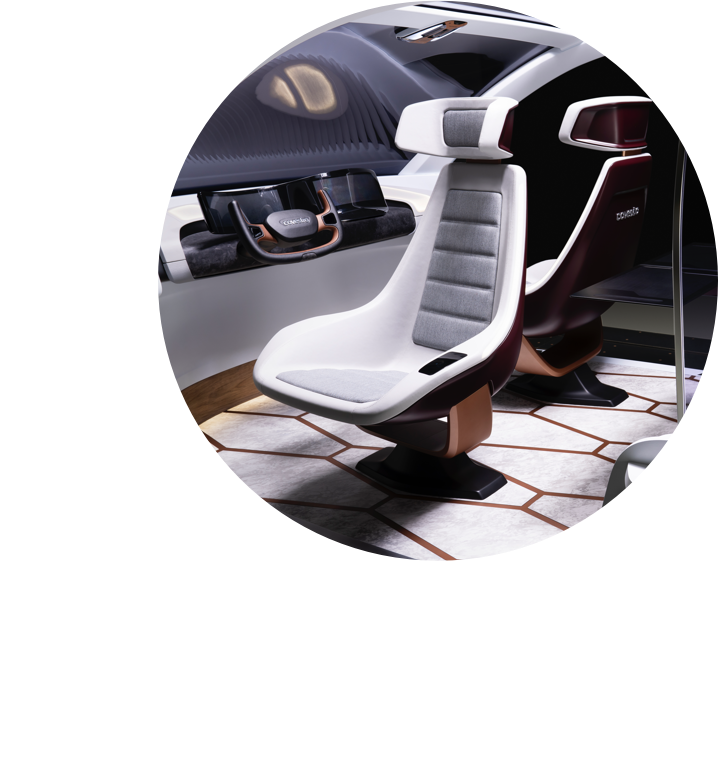
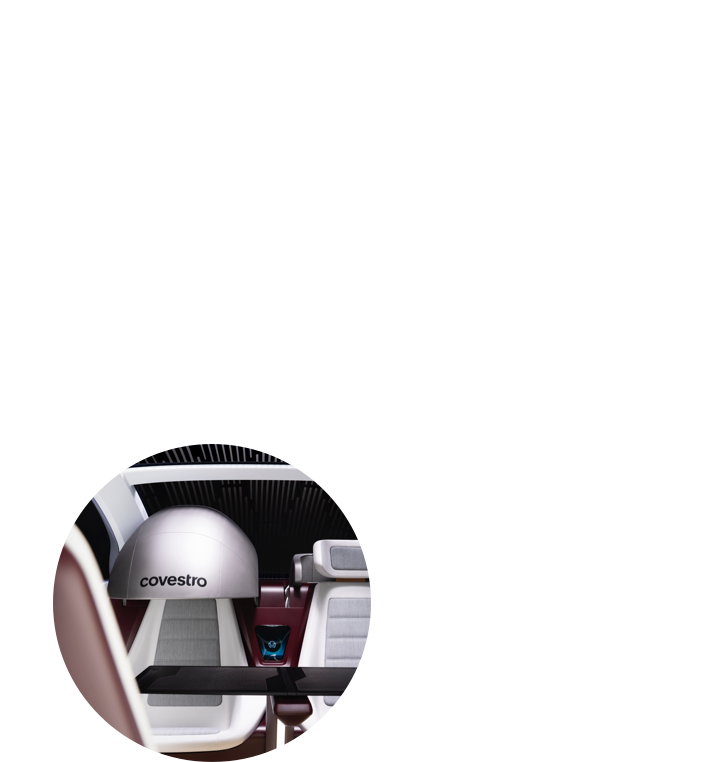
The interior: seamless and fully networked
Trends such as autonomous driving, electromobility and car-sharing will redefine the way vehicles are used. The car will double as a mobile living room and study: Fully networked, it will be seamlessly integrated into day-to-day life. Covestro has joined forces with industrial partners to develop a premium interior concept for future mobility that made its debut at the plastics trade show K 2019. The concept is based on material innovations that fulfill more demanding requirements in terms of functionality, comfort and design, but also efficiency and a lightweight interior.
“Our materials are paving the way for the mobility of tomorrow. We want to help shape the development process and are already a leading player. We are cooperating with partners along the value chain to this end,” says Jochen Hardt, Global Marketing Mobility at Covestro. “And our work has paid off: car manufacturers and our direct customers are extremely interested in the concept.”
Flexibility and comfort
The focus is on multi-sensor infotainment systems, movable and space-saving seats, smart surfaces and personalized lighting. Thanks to polycarbonate products such as Makrolon® and Makrofol®, three-dimensional multifunctional displays can be integrated seamlessly in the dashboard of the future. Plastics ensure energy-efficient thermal management, while polyurethane foam muffles external noise and creates a personal private space in the privacy dome, which passengers can lower over their heads if required. Use of the composite material Maezio™ makes for particularly narrow, lightweight and robust seats that can be moved at will, without compromising on comfort. And the aqueous INSQIN® coating technology gives their surface the appearance of real leather. The future of mobility depends in no small part on materials – and Covestro has them in its portfolio.
Discover the car of the future
The car of the future will double as a multifunctional mobile living room and study. Discover Covestro’s ideas for the car interior of the future.
-
The display
A freely configurable display integrated seamlessly in the dashboard? Polycarbonate gives designers a free hand. No geometry is too complex for this material from Covestro. Visitors to K 2019 had the opportunity to check out the optical quality of the slender and transparent prototype.

-
The overhead console
Ultra-thin and versatile in design, incorporating electronics, lighting and an inclusive touch function: this could be the control panel of the future, mounted where the rear-view mirror currently goes. Polycarbonate is again the material of choice here, supplemented by specialty films boasting a wide range of colors and properties, including scratch resistance.
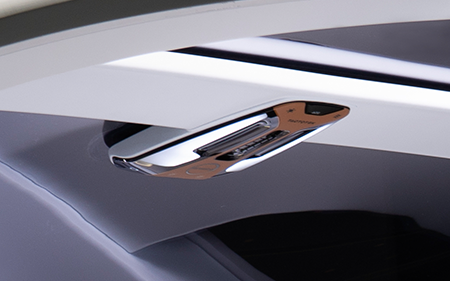
-
Seating
The car seat of the future has to be narrow, robust, lightweight and movable in order to create as much space as possible in the vehicle’s interior. Covestro’s thermoplastic composite material Maezio™ combines robustness with flexibility, making it a perfect fit. This also goes for bio- and water-based coatings for seat backs and cushions made of polyurethane, both of which feature in Covestro’s portfolio.
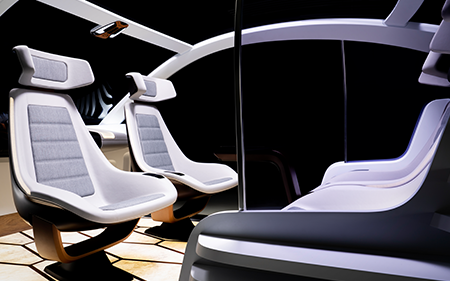
-
Ventilation
It’s goodbye to buttons: not only can polycarbonate be used in a ventilation cover of versatile design, but the temperature will be able to be controlled via a touch function in future.

-
The floor
One topic that has not been given the attention it deserves is the car floor. In electric vehicles, the floor will be much flatter than before, opening up a wealth of possibilities. Whatever its design, the floor must be robust, easy to clean and resistant to wear and tear in order to withstand the demands posed by increasing car-sharing. Polycarbonate is a perfect match – it even enables LEDs to be integrated in creative lighting solutions.
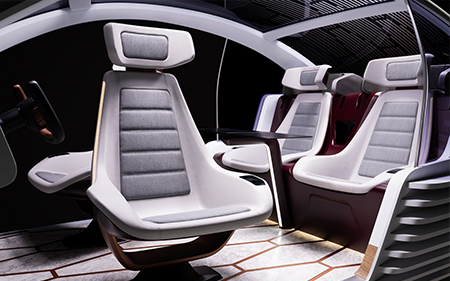
-
Surfaces and lighting
No longer do we have to put up with too few lamps providing either inadequate or overly bright illumination inside the car. Thanks to Covestro’s materials, lighting is now easily integrated in the car’s interior – whether in the floor, doors, ceiling or seats. Whether as ambient lighting, a ventilation temperature indicator, a conventional reading lamp or more, Covestro’s plastics cast the interior in an entirely new light.
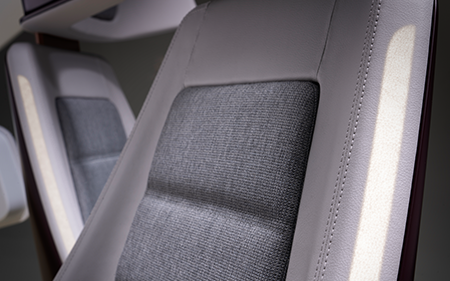
-
The table
When the car needs to be transformed into an office, a space-saving work area is of the essence. Thermoplastic composites from Covestro’s Maezio™ range offer the perfect solution: they are just as stable as metal, but extremely narrow and lightweight too. A Maezio™ table can bear 60 times as much weight as other materials of the same thickness – more than enough for a laptop, notepad and cup of coffee while en route to work or during meetings.
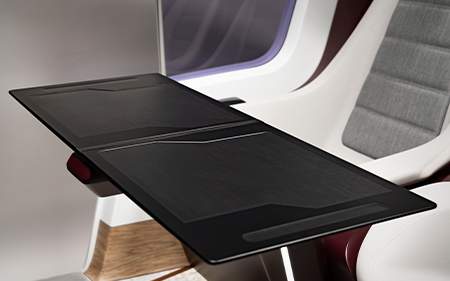
-
A personal private space
Sometimes you just crave peace and quiet – even when sharing a ride in a self-driving car. Now you can block out sounds from other passengers and the outside world thanks to a dome made from noise-canceling foam. Loudspeakers and other functions can theoretically also be integrated in the dome, making for an even more personal travel experience.
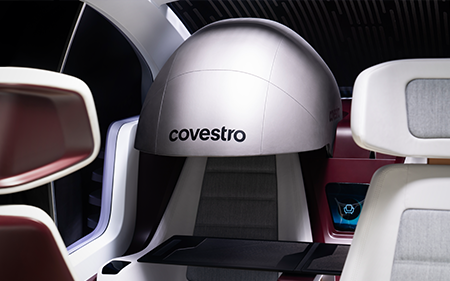


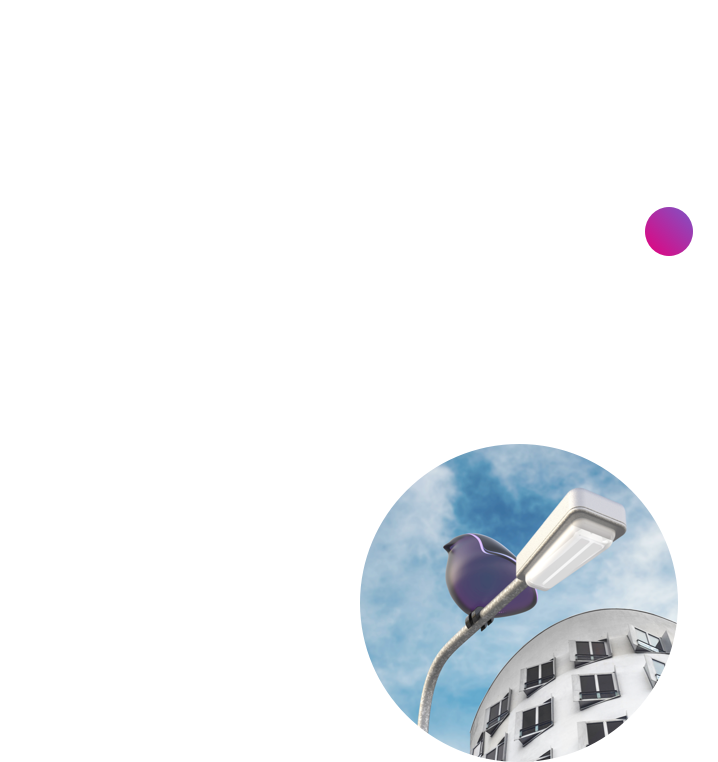
Materials for the digital age
The 5th-generation mobile communications standard is set to bring about radical change. Not only will it be possible to download films in a matter of seconds thanks to data transmission rates of up to 10 gigabits, but 5G’s extremely low latency will also enable real-time communication – between cars and the internet, to name just one example. Regarded as a basis for the breakthrough of the Internet of Things, the standard is also considered a cornerstone of Industry 4.0 as well as of a number of other groundbreaking trends in all spheres of life and economic sectors.
But there are challenges to be overcome: 5G transmits its signals on a particular wavelength and has to operate extremely reliably for applications such as self-driving cars. It follows that many more base stations need to be deployed, with estimates ranging from 500,000 to 800,000 in Germany alone. In Japan, the government recently gave the go-ahead for its 200,000 or so traffic lights to host this 5G network infrastructure. State-of-the-art materials and designs and new collaborations are required if the cityscape is not to be defaced as a result. This is precisely why 2019 saw Covestro, Deutsche Telekom and Sweden’s Umeå Institute of Design (UID) join forces in a pilot project to develop creative designs for 5G base station housings capable of blending seamlessly into their urban surroundings. These might come in the guise of colorful birds perching on a traffic light or street lamp, masquerade as a clock at a bus stop, or be camouflaged in the color of the building on whose facade they are mounted.
Innovative material solutions
Material solutions from Covestro satisfy the associated requirements to the letter: they are weather-resistant, offer design versatility, allow 5G signals to penetrate and can be recycled or made of recycled polycarbonate. “We’re well prepared for the breakthrough of 5G and have the solutions to cope with the forthcoming growth in demand for base stations and the associated materials,” says Dr. Fabian Grote, Industrial Marketing Manager at Covestro.
What do you think?
Around how many 5G base stations will be required to provide blanket mobile communications coverage in Germany?
Source: BMU
Correct! An estimated 500,000 – 800,000 5G base stations will be required.
Unfortunately not correct. An estimated 500,000 – 800,000 5G base stations will be required.



From waste gas to valuable raw material
Waste gas that used to billow in large quantities from giant industrial facilities can be recycled as a raw material in the future. Covestro is collaborating with 14 partners from science and industry to extract carbon from the steel industry’s emissions in the European research project Carbon4PUR. The carbon is then used in the production of insulating materials and coatings. A particularly exciting aspect is that the carbon dioxide and carbon monoxide can be processed directly instead of having to be separated first, which saves a lot of work.
Side by side
In the words of Prof. Mark Saeys from consortium partner Ghent University: “We need this type of collaboration between industry and universities and across various sectors and skills in order to achieve research and climate goals more quickly. Carbon4PUR sets an excellent example with great partners.” The idea behind Carbon4PUR is to use the carbon from industrial waste gases as a future source of raw materials for the polymer industry. The first test quantities of polyol precursors have now been successfully manufactured at the CAT Catalytic Center of RWTH Aachen University on the basis of model gases. Covestro has managed to convert these precursors into polyols and to scale the process to the point of being able to test initial rigid foam and coating applications at project partners. The results are now being taken into the next phase. “Using industrial waste gases as a future source of raw materials with a view to expanding the resource base and closing the carbon cycle is an important step in the right direction,” says Dr. Liv Adler, Covestro’s Carbon4PUR coordinator.
What do you think?
What percentage of CO2 can Covestro incorporate in specific plastics precursors?
Correct! The percentage of CO2 is 20%.
Unfortunately not correct. The percentage of CO2 is 20%.

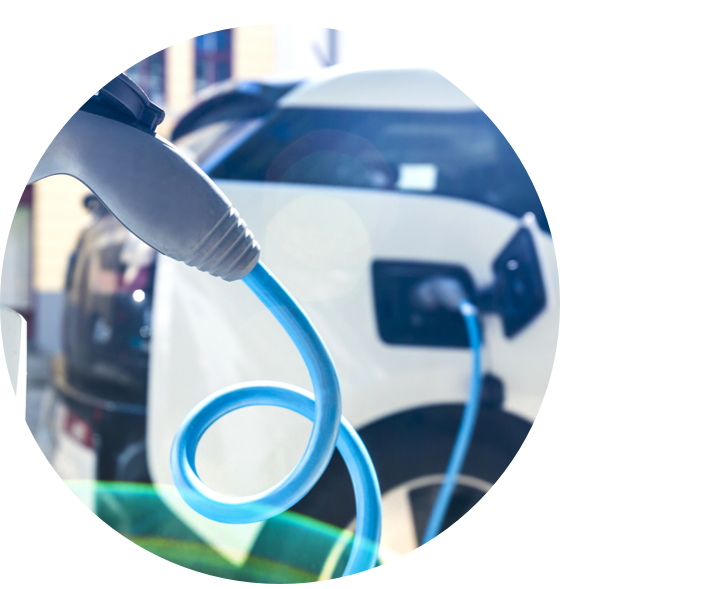

Packing a punch
Ongoing climate change and limited fossil resources are accelerating the breakthrough of new vehicle concepts and alternative drive technologies. Electric vehicles are gaining ground as a future means of transport. According to estimates by consultants Deloitte, some 21 million electric cars will be sold in 2030. This development opens up huge market potential for Covestro and offers many new applications for materials, for instance when it comes to the heart of any e-car: the battery.
Many battery cells have to be packed tightly together to ensure a high storage capacity. Cell holders, hybrid metal-plastic cooling plates, frames, crash absorbers and other battery pack parts made from the right material protect the cells and enable them to work efficiently. The right material includes polycarbonate from Covestro. Lightweight, stable, heat-resistant, mechanically robust, impact-resistant and flame-retardant, it boasts just the right properties for the e-mobility of the future, combining minimum material consumption with maximum performance, while also reducing battery maintenance.
Global proportion of e-cars in 2030
Source: iea
Versatile polycarbonates
The use of these materials makes for secure and well-cooled battery packs and renders cars lighter and more efficient. Batteries can also be customized to precise specifications. “The properties of our material are consistent with e-mobility requirements. We’re currently working on processes for the mass production of the necessary complex components to enable us to respond flexibly to market conditions and customer specifications in the future,” says Steven Daelemans, an electromobility expert at Covestro. We are thus working on sustainable product innovations for one of the megatrends of our age, while at the same time strengthening our robust portfolio of products that are more resilient to cyclical fluctuations.”
What do you think?
How many e-cars will be on the world’s roads by 2030?
Source: iea
Correct! 125 million e-cars will be on the world’s roads by 2030.
Unfortunately not correct. 125 million e-cars will be on the world’s roads by 2030.

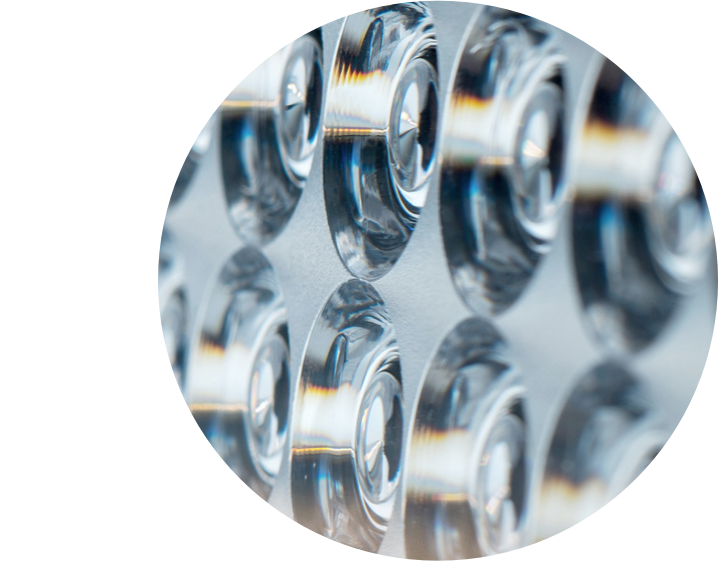

Source: Navigant Research
LED the light shine
Did the inventors of the lightbulb ever imagine that their innovative idea would one day be replaced by a more sustainable version? LED lighting technology offers a much more energy-efficient as well as versatile alternative to the traditional bulb. Vast amounts of energy can be saved in sectors ranging from mobility all the way to the cities of the future – and demand is increasing steadily as a result. Materials from Covestro have an important role to play, as they render LEDs even more efficient and eco-friendly, ensuring perfect light diffusion in lenses and lamp covers, and preventing cooling elements from overheating.
Covestro’s collaboration with the Karelia University of Applied Science and Finnish injection molding company Vesuto Oy demonstrates what is possible in practice. The three have joined forces to develop a cooling element for LED lights that dissipates heat evenly – thanks to polycarbonate.
Cooperation for the circular economy
The next LED milestone is already in sight: Signify, the world market leader in lighting, has recently started using Covestro’s polycarbonates in its 3D-printed luminaires. “Plastics from Covestro enable us to customize our luminaires extremely quickly,” says Coen Liedenbaum, Venture Manager 3D Printing at Signify. The material is fully recyclable for good measure. These LED efforts illustrate how Covestro is looking beyond the confines of its own industry with partnerships designed to push boundaries in pursuit of a future technology and drive the concept of the circular economy.

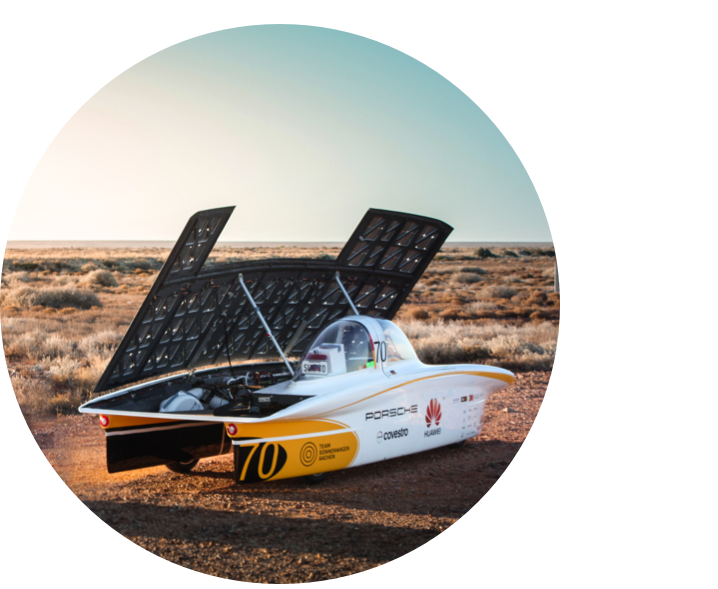

Full solar power ahead!
In 2019, an international team of students from RWTH Aachen University and FH Aachen University of Applied Science once again showed how it’s possible to drive thousands of kilometers without a drop of fuel – in a new model of their solar-powered Sonnenwagen. Thanks to its ingenious design, the vehicle weighed under 170 kilograms and could travel at up to 145 kph, helped by high-quality and innovative materials from Covestro in its headlamps, steering wheel, engine and coating.
The concept car was developed to compete in Australia’s 2019 Bridgestone World Solar Challenge over a demanding 3,000-kilometer course. “Thanks to the car’s lightweight and functional materials, we were able to finish in an impressive sixth place,” says Markus Eckstein, Sonnenwagen Aachen team chairman.
This project forms part of Covestro’s strategy of developing sustainable and innovative solutions in line with the United Nations Sustainable Development Goals. When it comes to the development of mobility concepts, the focus is on goal 13, Climate Action.
What do you think?
